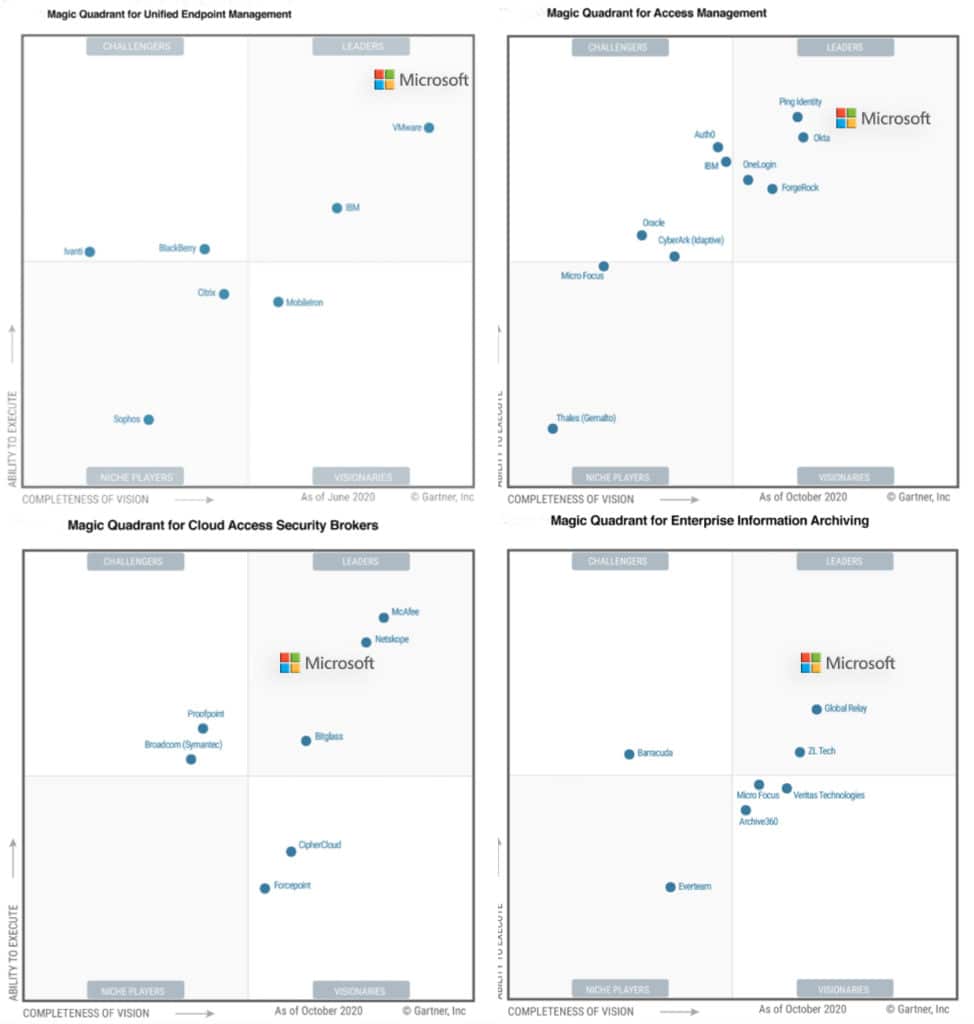
Microsoft is a Leader in Five Gartner 2020 Magic Quadrants
It’s no new surprise that Microsoft is a leader according to Gartner, but we can’t help noticing that the company has earned this distinction in five of the 2020 Magic Quadrants:
- Enterprise Information Archiving
- Cloud Access Security Brokers
- Access Management
- Endpoint Protection Platforms
- Unified Endpoint Management
Let’s take a quick look at each of these categories and see why Microsoft is leading in them.
Enterprise Information Archiving
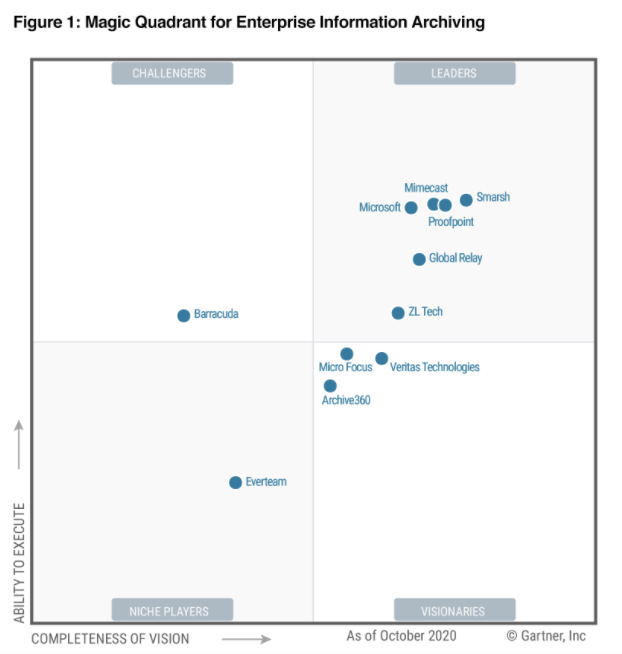
Since users generate massive amounts of messages and data, archiving is important for streamlining and organization. Gartner estimates that nearly half of all enterprises will adopt Enterprise Information Archiving (EIA) by 2023. Microsoft sees information archiving as a risk management and compliance issue in addition to organization, and treats its significance accordingly. Over the past few years they’ve created new solutions within this sphere, such as Insider Risk Management and the “Know Your Data” dashboard, and they’ve added new compliance workflow customizations and restructured communications archiving in Teams. Solutions like these have earned them a leader status in EIA for the past three years.
Cloud Access Security Brokers
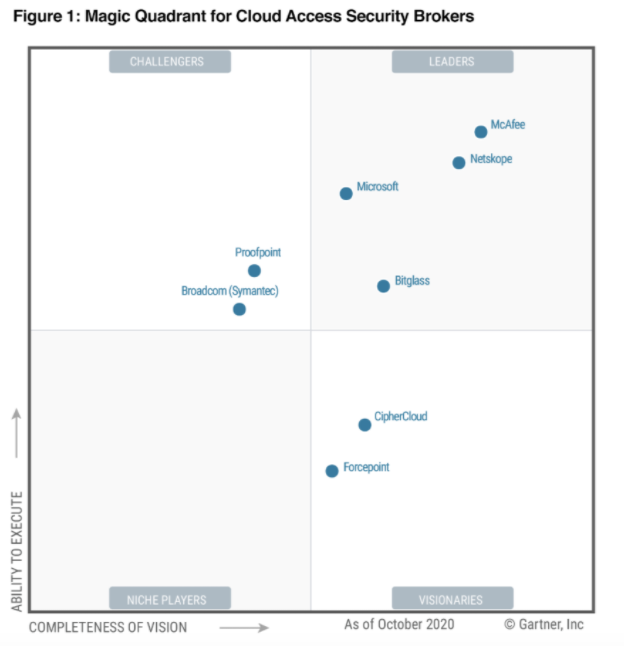
This year the use of Cloud Access Security Brokers (CASB) has really taken off, with the increase in remote work making it more relevant than ever. According to Gartner, leaders in this category are strongly cloud-rooted and “have a deeper understanding of users, devices, applications, transactions, and sensitive data than CASB functions designed to be extensions of traditional network security and SWG security technologies.” Microsoft’s CASB is Microsoft Cloud Access Security (MCAS), which it calls an enabler in both productivity and security. It serves this dual purpose by giving administrators enhanced visibility into their cloud apps and services, with the help of sophisticated management and analytics within a Zero Trust framework. Microsoft offers MCAS protection across cloud platforms, including Google and Amazon Web Services. Its five key capabilities are:
- Shadow IT Discovery
- Information Protection
- Secure Access
- Threat Protection
- Cloud Security Posture Management (CSPM)
Access Management
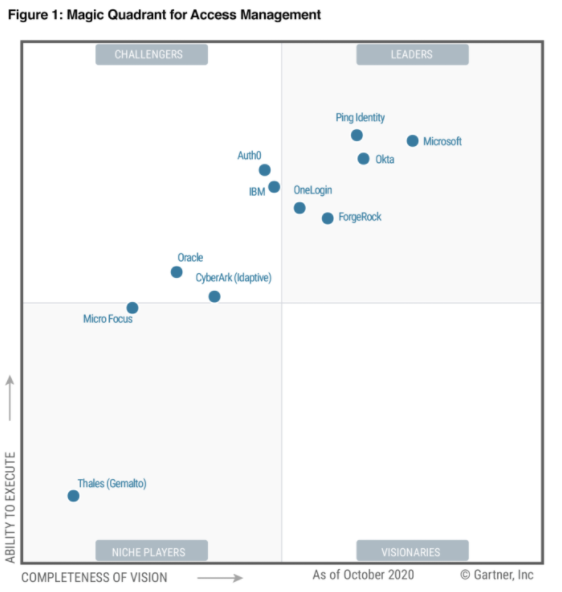
Access Management is another area where Microsoft has long been a leader, with its Azure AD solution earning it this competency for four years in a row. Designed to be both secure and scalable, Azure AD enforces strong authentication and adaptive risk-based access policies, giving users easy access with single sign-on (SSO) capabilities and reducing IT costs. This is another solution that creates a strong foundation for a Zero Trust policy. Based on customer feedback this year, Microsoft has made improvements in these areas of Azure AD:
- Adaptive security
- Secure application access
- Report-only mode
- API access control
- Open standards
- Web Content Accessibility Guidelines
Endpoint Protection Platforms Magic Quadrant
Likewise, Microsoft has brought a number of enhancements and new features to its Endpoint Protection Platform, Microsoft Defender Advanced Threat Protection (ATP). These include:
- Multi-layered, built-in, cloud-powered protections
- Threat Analytics
- Behavioral detections
- Improvements in Threat and Vulnerability Management
- Easy deployment
- Automated security
- Threat containment
- Secure Score
- Microsoft Threat Experts
As Gartner states, EPP solutions are important for detecting and and preventing file-based malware, malicious scripts and memory-based threats, and for investigating and responding dynamically to them.
Unified Endpoint Management
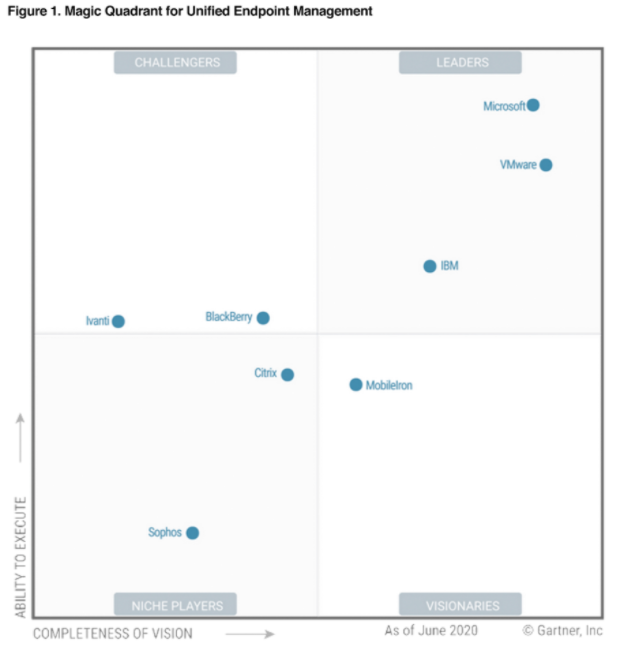
Gartner says the pandemic effects drove leaders to Unified Endpoint Management (UEM) in 2020, as it allows for “reduced complexity, location-agnostic device management, and analytics to track and improve device performance and end-user experience.” In the UEM category Microsoft has especially excelled, moving quite a bit on the chart from where it was last year. Corporate Vice President Brad Anderson credits this to a shift in its Endpoint Manager team’s philosophy, focusing on usage instead of revenue as the driving goal.
More Gartner Magic Quadrants
It turns out Microsoft stayed high on the leader list for UEM in 2021 too, while others fell. Check out that Magic Quadrant or search for a category alphabetically here to see other past charts. Official Magic Quadrant documents are available for purchase, or you can just browse summaries, inclusion criteria, and vendors.
